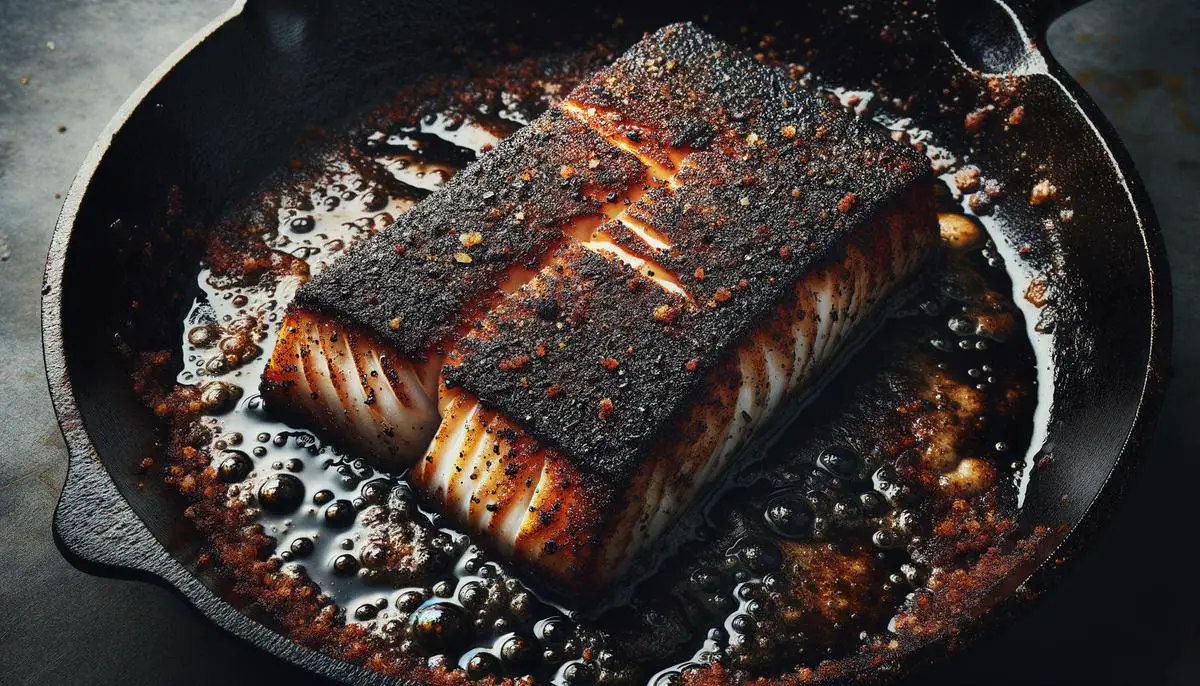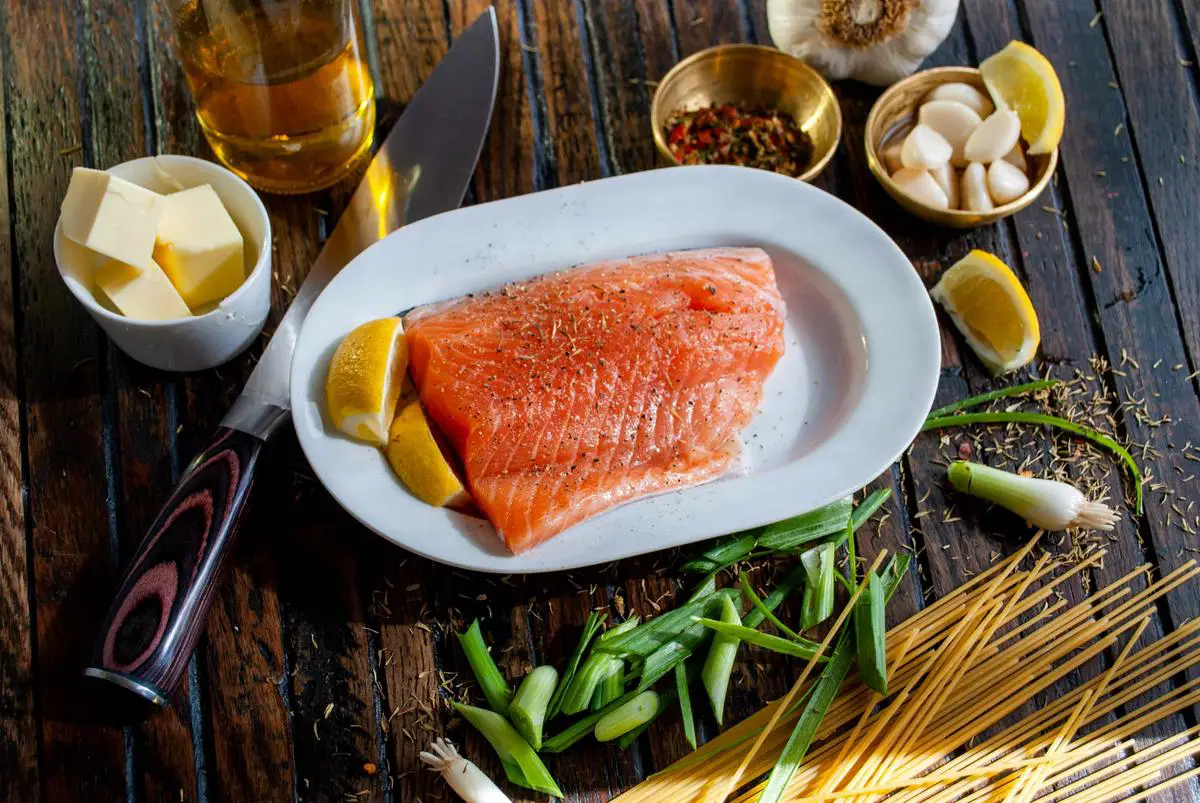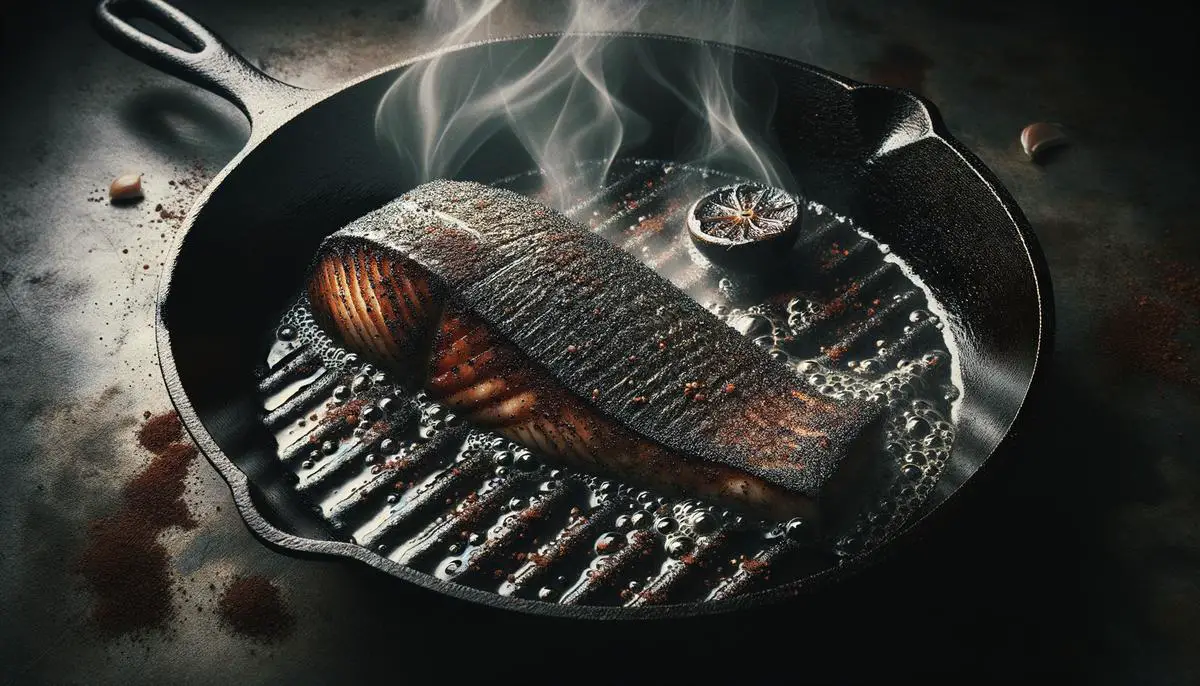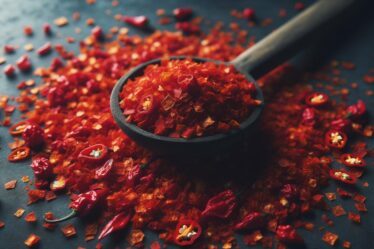
Origins of Blackened Seasoning
Chef Paul Prudhomme, an icon in the culinary world renowned for his advocacy of Cajun cuisine, is the mastermind behind the creation of blackened seasoning that many gourmets hold dear. This spice blend emerged amid the vibrant food scene of Louisiana, blending the rustic charm of Cajun with the sophistication of Creole cooking. Blackened seasoning sidesteps the extreme heat associated with Cajun flavors for a more moderated yet potent profile, nestling comfortably between the fire of Cajun and the subtlety of Creole seasonings.
Crafted to deliver a perfect crust with a fiery character without overpowering the natural flavors of the food, blackened seasoning incorporates smoked paprika, a choice not typical of its counterparts. This inclusion delivers a resonant smokiness that is quite literally transformative, setting a foundation upon which the culinary ballet of spices plays out—the white and black peppers offering a nuanced piquancy that tilts towards bold without overtaking the palate.
What elevates blackened seasoning from a mere mixture of spices to a cornerstone of gourmet cooking is Chef Prudhomme's method of application. Meats like chicken or seafood extensively coated in this seasoning are seared at high temperatures in a dry cast iron skillet. This technique ensures that each morsel develops a richly dark crust, teeming with flavor while evoking a delicate balance that only blackened seasoning can provide.
In embracing blackened seasoning, one partakes culturally and historically in an act that continues to echo through time—the burst of flavor in each bite a nod to the innovation and cherished traditions from which this blend has sprung. It stands triumphantly as a celebration on the palate, bringing more than heat to the table by invoking culinary heritage and regional pride with every aromatic stir of the pot.
Choosing the Right Fish
Selecting the right type of fish for blackening is critical to achieve the desired culinary result—where the firm texture meets the intense flavor infusions from the blackened seasoning method. Ideal candidates for this cooking style have dense, firm flesh that can withstand high heat without falling apart.
Salmon, a popular choice due to its oily nature and hearty consistency, presents a flavorful profile that beautifully complements the powerful spices in blackened seasoning. Its thickness and fat content allow for a nicely charred exterior without drying out, ensuring a savory experience through each flake.
Cod, another excellent option, boasts a firm, white flesh that effectively absorbs the vivacious flavors of the seasoning, offering a delectable contrast between the mildness of the fish and the vibrant spice crust. This species' adaptability ensures it comes out perfectly moist throughout.
Mahi-mahi, with its slightly sweet flavor and substantial texture, takes on the boldness of the blackened spices exquisitely, making it a favorite for those who enjoy a delicate yet impactful palate experience. Similarly, snapper, recognized for its fine textured meat and mild taste, provides an excellent canvas for the rich, piquant flavors central to blackening.
These fish varieties each offer unique textural and flavor profiles that meet the cooking demands of high-heat searing and greatly enhance the complex character of blackened seasoning. When preparing fish with this method, each choice promises to delight with its distinctiveness, reinforcing the universal appeal and adaptative nature of this beloved culinary technique.

Photo by dbtownsend on Unsplash
Crafting Blackened Seasoning
To craft your own custom blackened seasoning blend, begin by gathering the following ingredients:
- 1 tablespoon smoked paprika
- 2 teaspoons salt
- 1 teaspoon onion powder
- 1 teaspoon garlic powder
- 1 teaspoon cayenne pepper
- ¾ teaspoon fresh ground white pepper
- ¾ teaspoon fresh ground black pepper
- ½ teaspoon dried thyme leaves
- ½ teaspoon dried oregano leaves
Procedure:
- Place all ingredients into a mixing bowl.
- Use a whisk or spoon to stir the ingredients together until they are thoroughly blended.
- To store the seasoning, transfer it to an airtight container and keep it in a dry, cool place to maintain its potency. Use within twelve months for best flavor.
Variations:
- For a milder blend, reduce the cayenne pepper to ½ teaspoon or less, according to taste.
- If you desire a smokier flavor, consider adding an additional ½ teaspoon of smoked paprika.
- For a hint of sweetness, which balances the heat, add ¼ teaspoon of ground cinnamon or brown sugar.
- Those who appreciate herbal notes might increase the thyme and oregano to ¾ teaspoon each.
- To boost the complexity, add ½ teaspoon of ground cumin.
This blend serves as a versatile seasoning, perfectly suited for chicken, fish, seafood, or even vegetables, offering a vibrant, flavorful crust when cooked at high temperatures in a skillet or grill. Adjust the ingredient amounts based on your taste preferences and dietary requirements, ensuring every meal is enhanced beautifully by your homemade blackened seasoning.

Photo by ratulghoshr on Unsplash
The Blackening Cook Technique
The blackening cook technique is an admired method in the culinary arts that focuses on achieving a crisply seasoned crust on foods like fish, elevating both their texture and flavor. This method involves thoroughly coating fish fillets—or other proteins—with a seasoning mix, typically one that carries a bit of spice and heat, such as the previously mentioned blackened seasoning blend.
Temperature control and proper timing are essential to master this technique. The key to success is a very hot skillet, which is why many chefs prefer using a cast iron skillet. Cast iron conducts and retains heat exceptionally well, promoting an even and intense heat surface required to sear the fish effectively.
After the fish has been generously coated with the spice blend, it's placed into the pre-heated skillet. The initial cooking stage is swift, typically only about 2-3 minutes per side, depending on the thickness of the fillets. This high-heat method seals in the spices and creates a savory, crisped crust while maintaining the fish's internal moisture.
It's critical to prevent the spices from burning, which can introduce a bitter flavor. Observing the stove's heat setting and adjusting it as necessary to maintain the right temperature without crossing into smoking or burning territory is mandatory. This balance ensures that while the exterior of your fish develops a rich, appealing crust, the interior remains tender and flakes perfectly. Reaching this level of culinary detail may take practice and precise attention to cooking times and skillet temperatures.
The appropriateness of kitchen tools also comes into play. As mentioned, a quality cast iron skillet is vital. The durable, heavy material heats up quickly, stays hot, and delivers the intense and consistent skirt required to achieve that perfect blackened exterior. Having a pair of sturdy tongs for flipping the fish can avoid puncturing the crust you strive so hard to build. With these tools and a mastery of timing and temperature, the blackening technique certainly results in flavorsome and visually delightful dishes – proof that simple methods can often lead to impressive outcomes.

Serving and Pairing Suggestions
Serving blackened fish offers an exciting opportunity to experiment with various flavors and sides. It should complement the pronounced spice of the dish while introducing textural contrasts. A popular accompaniment like Cajun rice pilaf harmonizes with the spice level and adds comfort with its rich, savory profile steeped in the trinity—onion, bell pepper, and celery—of Cajun culinary tradition.
A crisp green salad can offer a refreshing contrast, featuring ingredients such as arugula, radicchio, and a light vinaigrette. The bitterness of the greens balances the intense seasoning of the fish, providing a palate-cleansing effect between bites. For garnishes, consider a sprinkle of finely chopped herbs like parsley or chives, which will add a touch of color and a fresh burst to uplift the dish's richness. A squeeze of lemon over the fish is decorative and enhances the flavors, cutting through the piquancy with a sharp, citrus note.
In terms of condiments, a dollop of remoulade sauce or a simple aioli can add a creamy texture and mild flavors, offering a cooling complement to the spice-laden fish. These are traditionally enjoyed with blackened dishes and can add a tangy punch to every mouthful.
When selecting beverages, white wines like Sauvignon Blanc or a crisp Chardonnay are fantastic choices for pairing with blackened fish. These wines offer enough acidity to cut through the spiciness and richness while harmonizing with the dish's inherent flavors. For those who prefer non-alcoholic options, sparkling water with a squeeze of lime or lemon provides a refreshing accompaniment to the bold flavors of the meal.
Providing these thoughtful additions complements the taste and fundamentally enhances the overall experience of the dish, inviting an exquisite blend of textures and flavors that fully celebrate the essence of blackened cuisine.

Blackened Fish Recipe
Ingredients:
- 4 fish fillets (6 ounces each), such as salmon, cod, or mahi-mahi
- 1 tablespoon smoked paprika
- 2 teaspoons garlic powder
- 2 teaspoons salt
- 1 teaspoon onion powder
- 1 teaspoon ground black pepper
- 1 teaspoon dried thyme
- 1/2 teaspoon dried oregano
- 1/2 teaspoon cayenne pepper, adjust based on heat preference
- 1/4 cup unsalted butter, melted
Instructions:
- In a small bowl, mix together the smoked paprika, garlic powder, salt, onion powder, black pepper, thyme, oregano, and cayenne pepper to create the blackening seasoning.
- Lay the fish fillets on a clean surface. Brush each fillet generously on both sides with melted butter.
- Sprinkle the blackening seasoning over the buttered fillets, ensuring they are completely coated with a thick layer of the spices.
- Heat a cast iron skillet over high heat until very hot. Place the seasoned fillets in the skillet.
- Cook the fillets for about 3 minutes on each side or until the outer spice layer has formed a characteristic dark, crispy crust.
- Remove the fish from the skillet and let it rest for a few minutes.
Serve the blackened fish with a wedge of lemon or lime for added zing. Enjoy immediately for best flavor and texture.
Nutrition Facts per Serving (1 fillet):
Calories: 280 kcal
Total Fat: 15 g
Saturated Fat: 7 g
Trans Fat: 0 g
Cholesterol: 105 mg
Sodium: 1180 mg
Total Carbohydrate: 2 g
Dietary Fiber: 1 g
Total Sugars: 0 g
Protein: 34 g
- Prudhomme P. Chef Paul Prudhomme's Louisiana Kitchen. William Morrow Cookbooks; 1984.
- Lagasse E. Essential Emeril: Favorite Recipes and Hard-Won Wisdom from My Life in the Kitchen. Oxmoor House; 2015.
- Raichlen S. How to Grill: The Complete Illustrated Book of Barbecue Techniques. Workman Publishing Company; 2001.
- US Department of Agriculture. FoodData Central. Published 2019. Accessed [current date].



